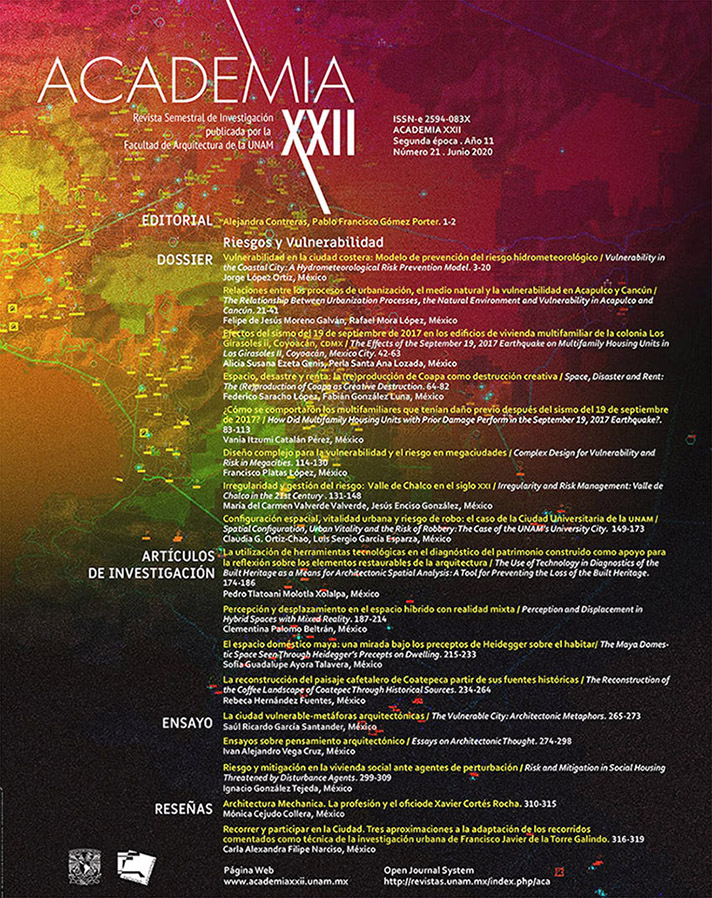How Did Multifamily Housing Units with Prior Damage Perform in the September 19, 2017 Earthquake?
Main Article Content
Abstract
Over two and a half years after the September 19, 2017 earthquake, there are still many families whose homes were damaged that are still living with relatives or in temporary shelters, such as in tents or under tarps. In Mexico City, a place with a high risk of earthquakes, housing plays a major role, as the capital houses 7.46% of the country’s total population (8,912,820 out of 119,530,753 people; INEGI, 2017). Many of these people live on the city’s old lakebed, where strong movements of the earth can threaten certain types of dwellings due to a variety of reasons that will be examined herein. It is of vital importance to reflect on what could happento housing units that have already suffered damage in the next major earthquake. Many residents argue that “if our building withstood the 1985 and 2017 earthquakes, it will withstand another earthquake of lesser magnitude.” This article presents the differences between the 1985 and 2017 earthquakes and how they affected different types of structures. Housing proved to be particularly vulnerable, and the housing units that were most heavily damaged were apartment buildings between four and 10 stories high. The primary architectonic/structural factors observed in these residences, which withstood the 1985 earthquake with only minor damage, are analyzed, along with their later performance in the last major earthquake. This study was conducted over the course of a year with support from the UNAM’s Engineering Institute (II-UNAM).

